- Manufacturing Method: distilled
- Part of Plant: Resin
- Main Chemotypes: alpha-Phellandrene, Terpinolene, p-Cymene, beta-Phellandrene, alpha-Pinene
- Smells Like: sweet, earthy, herbaceous, pungent
Introduction to Frankincense Oil
Frankincense oil, derived from the resin of the Boswellia tree, holds a revered place in history for its rich cultural significance and myriad of therapeutic properties. Let’s delve into the captivating world of frankincense oil and explore its origins and diverse applications.
What is Frankincense Oil?
Frankincense oil, also known as olibanum oil, is extracted from the resin of the Boswellia tree, native to regions of Africa and the Middle East. This precious essential oil boasts a woody, earthy aroma with subtle citrus and spice undertones, making it a prized ingredient in perfumery, spiritual rituals, and natural health practices.
Key Characteristics of Frankincense Oil:
- Aroma: Earthy, woody, with hints of citrus and spice.
- Color: Pale yellow to amber.
- Consistency: Thin and watery.
- Chemical Composition: Rich in boswellic acids, monoterpenes, and sesquiterpenes, which contribute to its therapeutic effects.
Brief History and Origins
Frankincense has a storied history dating back thousands of years, revered for its sacred significance and esteemed value in ancient civilizations:
Origins of Boswellia Tree:
- Ancient Trade Routes: The Boswellia tree thrives in arid climates of regions such as Oman, Yemen, and Somalia, where it has been cultivated for centuries.
- Cultural and Religious Significance: Frankincense resin has been prized for its use in religious ceremonies, cultural rituals, and traditional medicine practices across various civilizations, including ancient Egypt, Greece, and India.
- Trade and Commerce: Frankincense was a highly coveted commodity along ancient trade routes, with caravans traversing vast distances to transport the precious resin to markets in Europe, Asia, and beyond.
What is Frankincense Oil?
Frankincense oil, revered for its rich aroma and therapeutic properties, is an essential oil extracted from the resin of the Boswellia tree. Let’s explore what frankincense oil is, its intriguing history and origins, and the meticulous extraction process that yields this precious substance.
History and Origins
Frankincense has a long and storied history dating back thousands of years, with its origins deeply intertwined with ancient civilizations and cultural practices:
- Ancient Civilizations: Frankincense has been prized for its sacred significance and esteemed value in ancient Egypt, Mesopotamia, and other civilizations.
- Spiritual and Religious Use: Frankincense resin was burned as incense in religious ceremonies and spiritual rituals, symbolizing purification, prayer, and divine connection.
- Trade Routes: The lucrative trade of frankincense along ancient trade routes, such as the Silk Road, played a pivotal role in shaping economies and cultures throughout history.
Extraction Process
The extraction of frankincense oil is a meticulous process that requires skill and precision to preserve its aromatic and therapeutic qualities:
- Harvesting: The process begins with the careful harvesting of resin from the Boswellia tree. Incisions are made in the bark, allowing the resin to ooze out and form tear-shaped droplets.
- Collection: The resin tears are collected by hand and left to harden and dry in the sun, forming golden nuggets known as frankincense tears.
- Distillation: Once dried, the frankincense tears undergo steam distillation, a gentle process that separates the essential oil from the resin.
- Separation: The resulting mixture of frankincense oil and water is collected and allowed to cool. The oil naturally rises to the surface and is carefully separated from the water.
- Filtration: The extracted frankincense oil is then filtered to remove any impurities, resulting in a pure and potent essential oil ready for use.
Chemical Composition of Frankincense Oil
The chemical composition of frankincense oil is intricate and diverse, contributing to its unique aroma and therapeutic properties. Let’s explore the key constituents that make up frankincense oil:
Main Components:
Monoterpenes: These compounds are abundant in frankincense oil and include:
- Alpha-Pinene: Known for its uplifting and invigorating aroma, alpha-pinene also possesses antimicrobial properties.
- Limonene: A fragrant terpene with powerful antioxidant properties, limonene contributes to the fresh citrus scent of frankincense oil.
- Beta-Pinene: Similar to alpha-pinene, beta-pinene has antimicrobial and anti-inflammatory properties, making it beneficial for skin health.
Sesquiterpenes: These larger molecules add depth to the aroma of frankincense oil and include:
- Incensole and Incensole Acetate: Unique to frankincense oil, these sesquiterpenes exhibit anti-inflammatory and mood-enhancing effects, contributing to the resin’s therapeutic properties.
- Alpha-Copaene: Known for its calming and grounding effects, alpha-copaene helps promote relaxation and mental clarity.
Diterpenes: Found in smaller quantities, diterpenes such as Sclareol contribute to the complex aroma profile of frankincense oil and may possess antiseptic and anti-inflammatory properties.
Other Constituents:
- Alcohols: Compounds like Linalool and Geraniol add floral notes to the aroma of frankincense oil and possess calming and skin-soothing properties.
- Esters: Esters such as Bornyl Acetate contribute to the sweet, fruity undertones of frankincense oil and may have sedative effects.
- Ketones: Ketones like Camphor and Fenchone provide cooling and analgesic properties, making them valuable for pain relief and muscle relaxation.
Benefits of Frankincense Oil
Frankincense oil offers a wide range of benefits for physical, mental, and emotional well-being, making it a valuable addition to aromatherapy, skincare, and holistic health practices. Let’s explore some of the key benefits of frankincense oil:
Aromatherapy
- Uplifting Aroma: The warm, resinous scent of frankincense oil helps uplift the mood and promote feelings of relaxation and tranquility.
- Stress Reduction: Inhaling the aroma of frankincense oil can help reduce stress and anxiety levels, providing a sense of calm and inner peace.
- Mental Clarity: The grounding aroma of frankincense oil aids in clearing the mind, improving focus, and enhancing mental clarity during meditation or mindfulness practices.
Skincare
- Anti-Aging Properties: Frankincense oil is prized for its ability to reduce the appearance of fine lines, wrinkles, and age spots, promoting a more youthful complexion.
- Skin Renewal: The regenerative properties of frankincense oil help stimulate cell turnover, promoting the growth of new, healthy skin cells and improving overall skin texture.
- Anti-inflammatory Effects: Frankincense oil possesses potent anti-inflammatory properties, making it effective in soothing irritated skin conditions such as acne, eczema, and rosacea.
Stress Relief
- Emotional Balance: Inhalation or topical application of frankincense oil can help balance emotions, easing feelings of tension, and promoting emotional well-being.
- Relaxation: The calming properties of frankincense oil help induce relaxation, making it an excellent choice for aromatherapy massages or bath rituals.
- Sleep Aid: Diffusing frankincense oil before bedtime can promote restful sleep by calming the mind and easing nighttime restlessness.
Immune System Boost
- Antimicrobial Properties: Frankincense oil exhibits antimicrobial activity against bacteria, viruses, and fungi, helping to protect against infections and strengthen the immune system.
- Anti-inflammatory Effects: By reducing inflammation in the body, frankincense oil supports overall immune function and helps the body fight off illness and disease.
- Stress Reduction: Chronic stress can weaken the immune system, and the stress-relieving properties of frankincense oil help mitigate this effect, enhancing immune resilience.
How to Use Frankincense Oil
Frankincense oil offers a variety of therapeutic benefits and can be used in different ways to support overall well-being. Here’s how you can incorporate frankincense oil into your daily routine:
Diffusion
- Aromatherapy: Add a few drops of frankincense oil to a diffuser filled with water. Turn on the diffuser and allow the aromatic mist to fill the room, creating a calming and uplifting atmosphere.
- Mood Enhancement: Diffuse frankincense oil during meditation, yoga, or relaxation practices to promote a sense of tranquility, focus, and mental clarity.
- Stress Reduction: Diffusing frankincense oil throughout the day can help reduce feelings of stress, anxiety, and tension, promoting emotional balance and well-being.
Topical Application
- Dilution: Before applying frankincense oil to the skin, dilute it with a carrier oil such as coconut oil, jojoba oil, or almond oil to prevent skin irritation. A general guideline is to use 1-2 drops of essential oil per teaspoon of carrier oil.
- Skincare: Apply diluted frankincense oil topically to the face, neck, or body to nourish the skin, reduce the appearance of wrinkles and fine lines, and promote a healthy, radiant complexion.
- Muscle and Joint Support: Massage diluted frankincense oil into sore or achy muscles and joints to alleviate discomfort, reduce inflammation, and promote relaxation.
Internal Use (with caution)
- Caution: Internal use of essential oils should be approached with caution and under the guidance of a qualified healthcare professional. Not all essential oils are safe for ingestion.
- Dilution: If using frankincense oil internally, ensure it is a high-quality, food-grade oil, and dilute it in a carrier oil or mix it with honey, water, or a beverage.
- Supportive Benefits: Internal use of frankincense oil may support overall health and wellness by promoting immune function, digestive health, and respiratory well-being. It can be added to recipes, teas, or taken in capsule form.
Research on Frankincense Oil
Frankincense oil has been the subject of numerous studies exploring its potential health benefits and therapeutic properties. Let’s examine some of the key areas of research on frankincense oil, including its antimicrobial properties, anti-inflammatory effects, and cancer-fighting potential:
Antimicrobial Properties
- In vitro Studies: Research suggests that frankincense oil exhibits broad-spectrum antimicrobial activity against bacteria, viruses, and fungi. It has been shown to inhibit the growth of pathogens such as Staphylococcus aureus, Escherichia coli, and Candida albicans.
- Mechanism of Action: The antimicrobial effects of frankincense oil are attributed to its high concentration of terpenes, particularly alpha-pinene and limonene, which possess potent antimicrobial properties.
- Potential Applications: Frankincense oil may be used as a natural alternative to conventional antimicrobial agents in skincare products, wound healing formulations, and household disinfectants.
Anti-inflammatory Effects
- Reduction of Inflammation: Studies have demonstrated that frankincense oil possesses significant anti-inflammatory properties, inhibiting the production of pro-inflammatory cytokines and enzymes that contribute to inflammation.
- Clinical Applications: Topical application or inhalation of frankincense oil may help alleviate inflammatory conditions such as arthritis, asthma, and inflammatory bowel disease.
- Potential Mechanisms: The anti-inflammatory effects of frankincense oil are attributed to its ability to modulate immune responses, reduce oxidative stress, and inhibit inflammatory signaling pathways.
Cancer-Fighting Potential
- Preclinical Studies: Research suggests that frankincense oil exhibits promising anticancer activity in preclinical studies, inhibiting the growth and spread of cancer cells in various cancer types, including breast, prostate, and colon cancer.
- Mechanisms of Action: The anticancer effects of frankincense oil are attributed to its ability to induce apoptosis (programmed cell death), inhibit angiogenesis (formation of new blood vessels), and suppress cancer cell proliferation and metastasis.
- Clinical Trials: While preclinical studies are promising, further research, including well-designed clinical trials, is needed to fully understand the potential anticancer properties of frankincense oil and its efficacy in cancer prevention and treatment.
Safety Considerations and Side Effects
While frankincense oil offers numerous health benefits, it’s essential to use it safely and be aware of potential side effects. Let’s discuss some safety considerations, dilution guidelines, and potential risks associated with the use of frankincense oil:
Dilution Guidelines
- Carrier Oils: Always dilute frankincense oil with a carrier oil such as coconut oil, jojoba oil, or almond oil before applying it to the skin. A general guideline is to use a dilution ratio of 1-2 drops of essential oil per teaspoon of carrier oil for topical use.
- Sensitive Skin: If you have sensitive skin, consider using a lower dilution ratio to minimize the risk of skin irritation or allergic reactions.
- Patch Test: Perform a patch test by applying a small amount of diluted frankincense oil to a small area of skin and waiting 24 hours to check for any adverse reactions before applying it more extensively.
Potential Risks
- Skin Irritation: Undiluted or improperly diluted frankincense oil may cause skin irritation, redness, or allergic reactions, particularly in individuals with sensitive skin or allergies.
- Photosensitivity: Some essential oils, including certain varieties of frankincense oil, may increase the skin’s sensitivity to sunlight, potentially leading to sunburn or skin discoloration. Avoid sun exposure after applying frankincense oil topically, especially if using it in higher concentrations.
- Internal Use: While some high-quality frankincense oils may be safe for internal use in small amounts, internal use should be approached with caution and under the guidance of a qualified healthcare professional. Ingesting essential oils can pose risks such as gastrointestinal upset, liver toxicity, or allergic reactions.
Choosing and Storing Frankincense Oil
Selecting high-quality frankincense oil and storing it properly are essential steps to ensure its efficacy and longevity. Let’s explore some considerations for choosing the best frankincense oil and how to store it to maintain its potency:
Quality Considerations
- Purity: Look for frankincense oil that is 100% pure and free from additives, fillers, or synthetic fragrances. Pure essential oils offer the most therapeutic benefits and potency.
- Source: Choose frankincense oil sourced from reputable suppliers known for their commitment to quality and sustainable harvesting practices. Oils derived from Boswellia trees grown in their native habitats tend to be of higher quality.
- Extraction Method: Opt for frankincense oil extracted through steam distillation or cold-pressing methods, which preserve the integrity of the oil’s chemical constituents and therapeutic properties.
- Botanical Name: Ensure the frankincense oil is labeled with its botanical name, Boswellia serrata or Boswellia carterii, to confirm its authenticity and species origin.
Proper Storage
- Dark Glass Bottles: Store frankincense oil in dark glass bottles to protect it from exposure to light, which can degrade its aromatic compounds and therapeutic potency. Amber or cobalt blue bottles are ideal for preserving the oil’s integrity.
- Cool, Dark Place: Store frankincense oil in a cool, dark place away from direct sunlight, heat sources, and fluctuations in temperature. A cabinet or drawer in a cool room is suitable for long-term storage.
- Airtight Seal: Ensure the bottle is tightly sealed to prevent air exposure, which can oxidize the oil and reduce its shelf life. Use the cap or dropper insert provided to seal the bottle securely after each use.
- Avoid Moisture: Keep frankincense oil away from moisture and humidity, as exposure to water can compromise its quality and promote microbial growth. Store the bottle in a dry environment to prevent contamination.
Popular Frankincense Oil Blends
Frankincense oil blends seamlessly with a variety of other essential oils, creating delightful aromatic compositions with enhanced therapeutic benefits. Here are some popular frankincense oil blends to explore for aromatherapy, skincare, and relaxation:
1. Frankincense and Lavender Blend
- Benefits: This soothing blend combines the calming properties of lavender with the grounding aroma of frankincense, promoting relaxation, stress relief, and emotional balance.
- Usage: Add 3 drops of frankincense oil and 3 drops of lavender oil to a diffuser for a calming bedtime blend. Alternatively, dilute the blend in a carrier oil for a soothing massage oil or bath soak.
2. Frankincense and Peppermint Blend
- Benefits: The refreshing scent of peppermint pairs beautifully with the earthy aroma of frankincense, creating an invigorating blend that uplifts the mood, promotes mental clarity, and relieves tension.
- Usage: Combine 2 drops of frankincense oil and 2 drops of peppermint oil in a diffuser for an energizing aroma. Alternatively, dilute the blend in a carrier oil and apply it to the temples and neck for a revitalizing massage.
3. Frankincense and Sandalwood Blend
- Benefits: This grounding blend of frankincense and sandalwood creates a harmonious synergy that promotes meditation, spiritual connection, and inner peace. It is ideal for enhancing mindfulness practices and promoting a sense of serenity.
- Usage: Mix equal parts of frankincense and sandalwood oil in a diffuser for a sacred meditation blend. Dilute the blend in a carrier oil and apply it to the wrists and chest for a calming aroma throughout the day.
4. Frankincense and Bergamot Blend
- Benefits: The citrusy brightness of bergamot complements the warm, resinous scent of frankincense, creating a balancing blend that uplifts the spirits, reduces stress, and promotes emotional well-being.
- Usage: Combine 3 drops of frankincense oil and 2 drops of bergamot oil in a diffuser for a mood-boosting blend. Dilute the blend in a carrier oil and apply it to pulse points for a refreshing perfume.
5. Frankincense and Geranium Blend
- Benefits: Geranium’s floral aroma blends harmoniously with frankincense, offering a blend that supports skin health, balances emotions, and enhances relaxation. It is ideal for skincare and emotional wellness.
- Usage: Mix 3 drops of frankincense oil with 2 drops of geranium oil in a facial serum or moisturizer for glowing skin. Diffuse the blend during times of stress or anxiety to promote a sense of calm and well-being.
Conclusion
In conclusion, frankincense oil stands as a remarkable essential oil revered for its rich history, diverse therapeutic properties, and captivating aroma. From its ancient origins in sacred rituals to its modern applications in aromatherapy, skincare, and holistic wellness, frankincense oil continues to captivate and inspire individuals seeking natural remedies for health and well-being.
Throughout this exploration, we’ve delved into the intricacies of frankincense oil, from its chemical composition and therapeutic benefits to its diverse uses and popular blends. We’ve discussed its potential as an antimicrobial, anti-inflammatory, and cancer-fighting agent, as well as its safety considerations and proper usage guidelines.

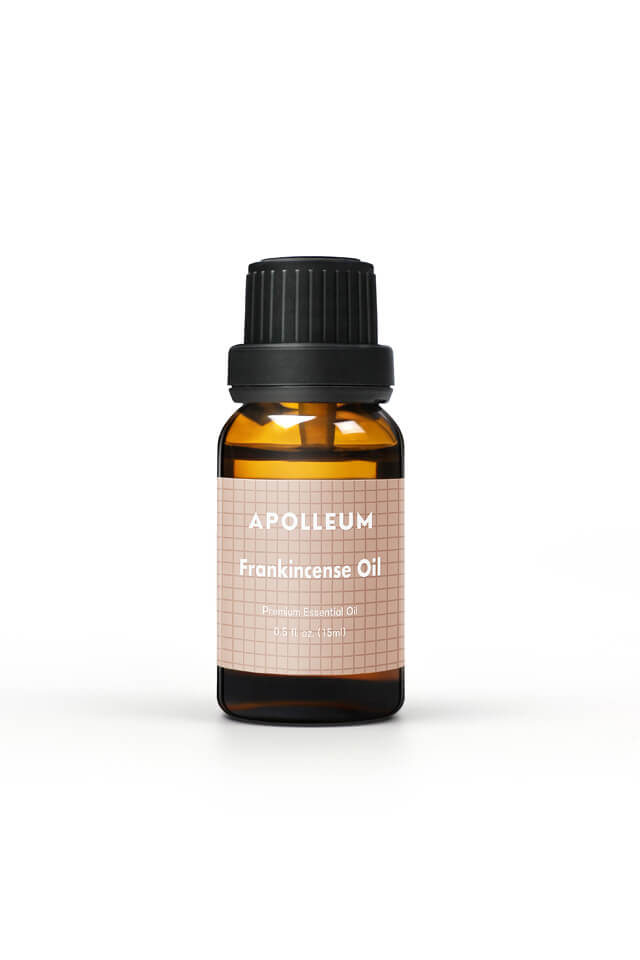
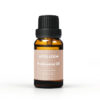
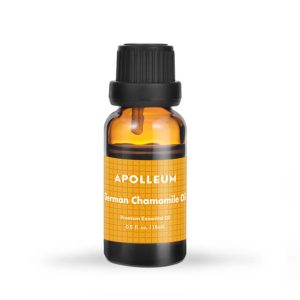
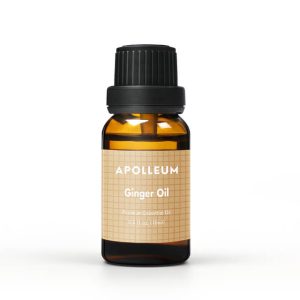
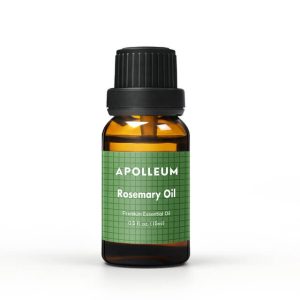
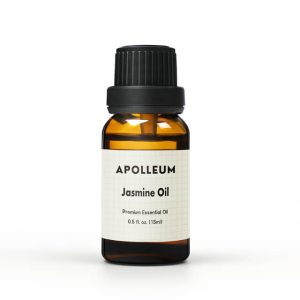
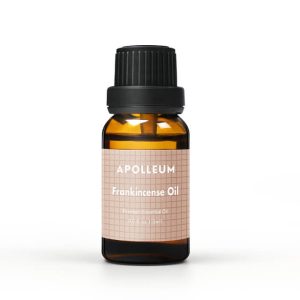
Reviews
There are no reviews yet.